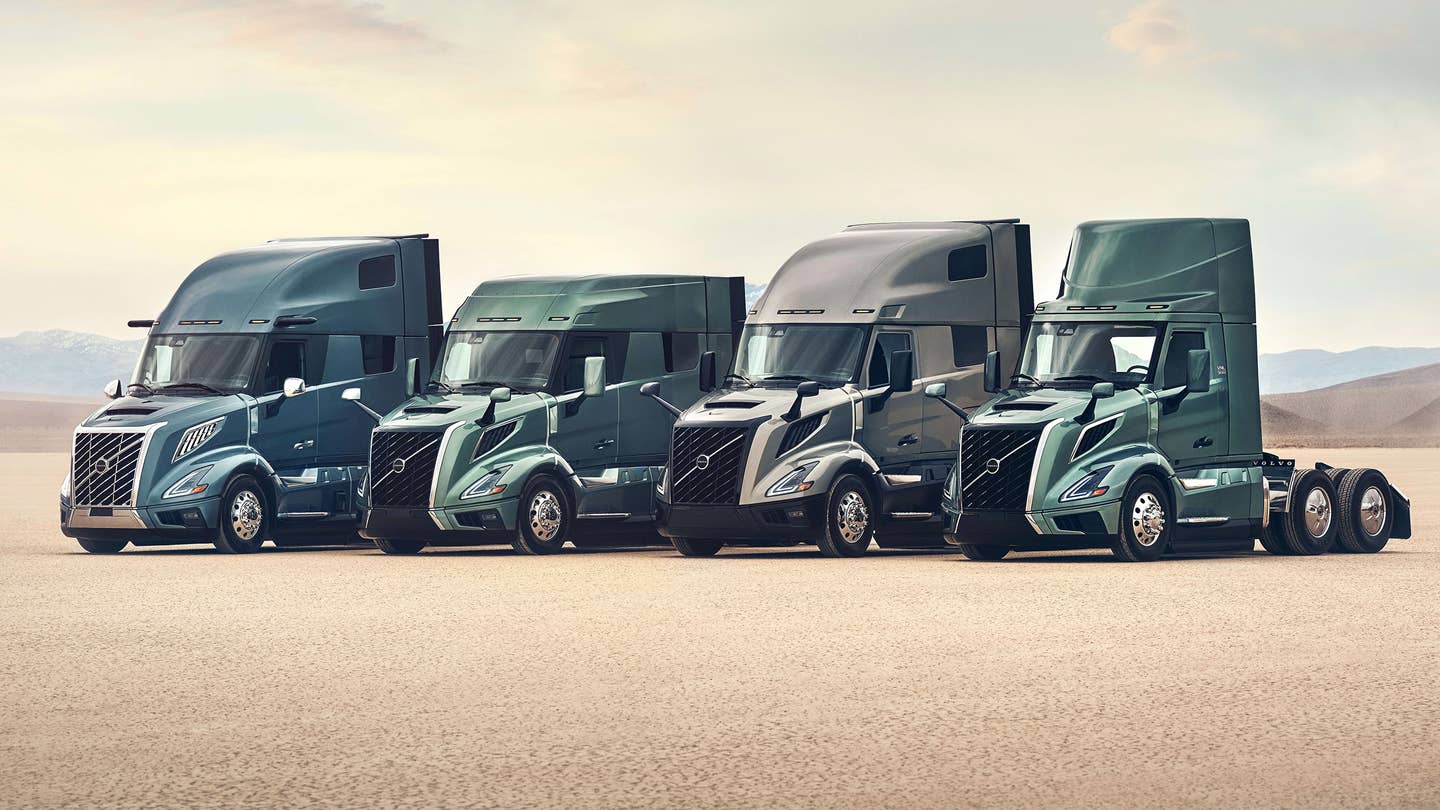The new VNL’s inline-six demonstrates how small adjustments can add up to serious efficiency gains.

Being a trucker seemed cooler in the ’80s. I blame Sylvester Stallone and Kurt Russell, with a little bit of Jerry Reed southern swagger still hanging on. While we think of semi trucks as American icons, in terms of global sales, Volvo is one of the biggest players. It’s been an innovator in trucking since it built its first commercial truck in 1928. The company’s latest rig, the new VNL, represents another leap forward in technology. More than a refresh, it’s 90% new and uses some ingenious engineering that makes it 10% more efficient than Volvo’s trucks from 2015.
The new VNL comes in six different cab configurations, four trim levels for both interior and exterior, and with three versions of the D13 inline-six engine with maximum torque of 1,850 lb-ft. Volvo claims that the truck can return 8.5 mpg driving at 85 mph; I’ve towed with duallys that struggled to get that.
While the total fuel efficiency increase comes from all the systems of the truck contributing marginal gains, what’s happening under the hood is more interesting than wheel covers and intelligent cruise control.
Starting from the inside of the 13-liter engine, Volvo has optimized its waved piston crown design first introduced in 2016. The company’s engineers had used computational fluid dynamics to model the flow of combustion inside the chamber. In doing so, they discovered a flaw with traditional piston crowns: when fuel is sprayed from the top center of the combustion chamber towards the cylinder walls, the flame fronts propagate towards the walls before converging, leaving a column of unused oxygen in the center of the chamber.
To combat this, the D13’s piston crowns are manufactured with ridges arranged radially. Fuel injector nozzles are pointed to spray in the valleys between them, creating flame fronts that move toward the cylinder wall and then reverse back to the middle. The original wave piston design had six segments, but the upgraded version has seven. I bet we can guess where future generations are heading.
Adding another segment in the wave design required another nozzle in the fuel injector. Dividing the total output of the injector into smaller doses means smaller control needles. Precision control of injections is critical for optimizing combustion, and smaller, lighter components equal more control. Not only do both of these upgrades improve fuel economy by 2%, but they also cut soot emissions in half.
While redesigning the pistons, Volvo also opted to go with a lower-profile crown. This allows for a longer connecting rod to be used without having to increase the height of the block. A longer connecting rod keeps it closer to parallel with the direction of the piston, which decreases side loading on the cylinder walls. Reducing that load minimizes friction. Again, small gains, but they all add up.
The turbo on the D13 is also smaller than what would normally be used on an engine of this size. Previous engines delivered max torque between 1,300 and 1,500 rpm. This engine starts making peak torque at 1,050 rpm and maintains it until 1,500. Volvo claims every 100 rpm drop while driving represents a 1.5% increase in fuel economy.
But what happens after the turbine section of the turbo is what especially piques my interest. The D13 uses a turbo compounder to reclaim energy usually lost out of the tailpipe. Yes, this technology dates back to World War II aviation—to my knowledge, at least—and has been used on and off since with mixed results. Remember, things like gasoline direct injection were possible in the ’50s, but only became viable for the mainstream in the last two decades. The compounder is an additional turbine downstream of the turbo’s turbine. Spun by exhaust gases, it is mechanically connected to the crankshaft through gears returning power. Volvo’s is connected through a fluid coupler to control the speed. Both the turbo and the compounder are insulated to conserve heat energy before the exhaust gases enter the optimized One-Box emissions after-treatment system.
The new VNL is also currently available with an all-electric drivetrain, but Volvo says it will be available with a hydrogen fuel cell, or with engines that can use renewable diesel. The configurator to build your own is just as extensive as you’d expect. While Volvo’s cars, like the V60, are only available in four shades of metallic boredom with few, if any, interior choices, these trucks are totally customizable. As they should be, for vehicles that can easily cost $200,000 and represent an operator’s livelihood and home on the road for weeks at a time.
Got tips? Send ’em to tips@thedrive.com



